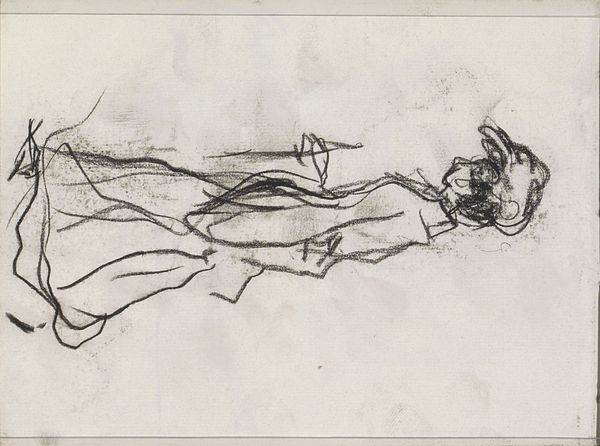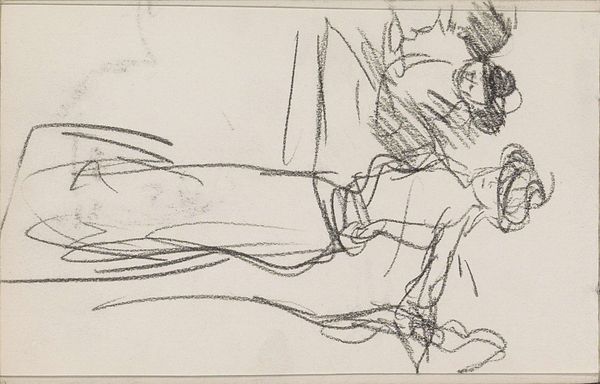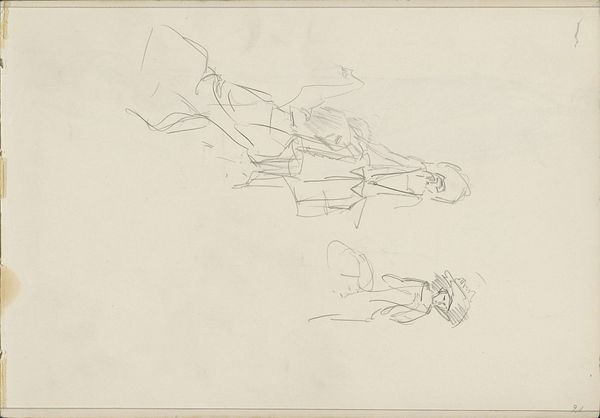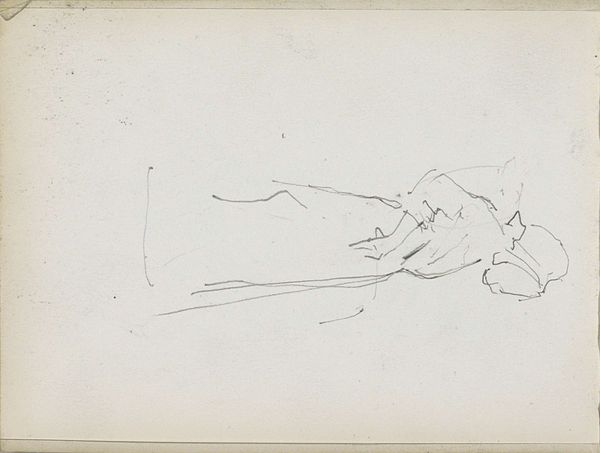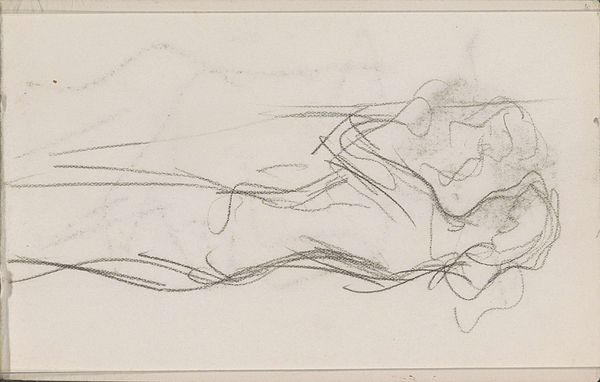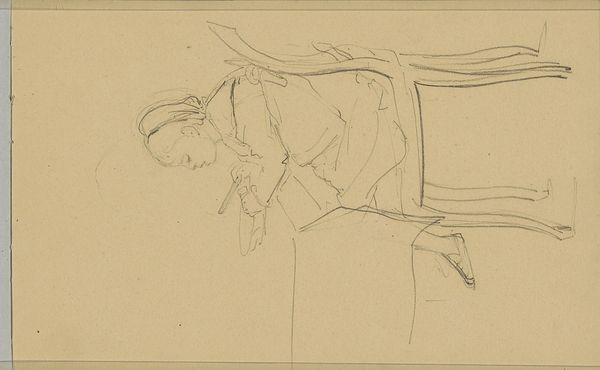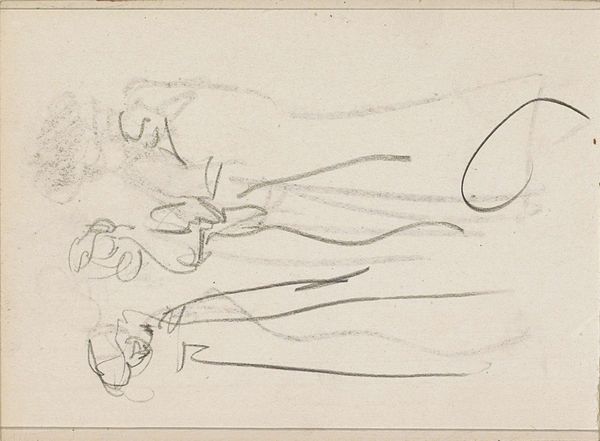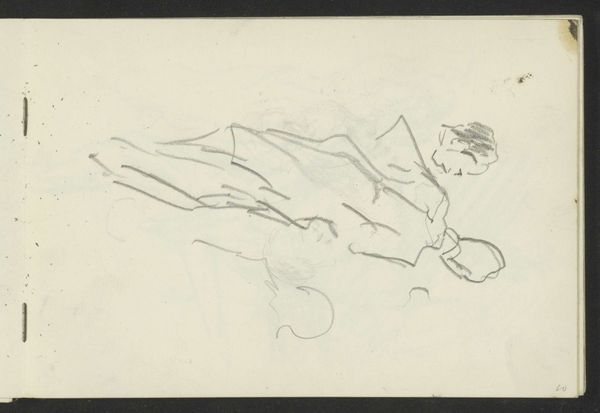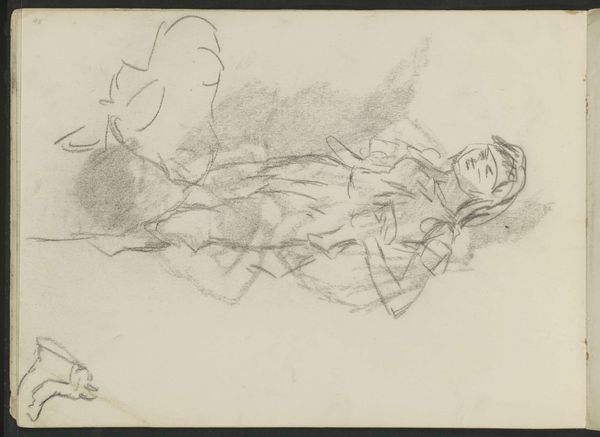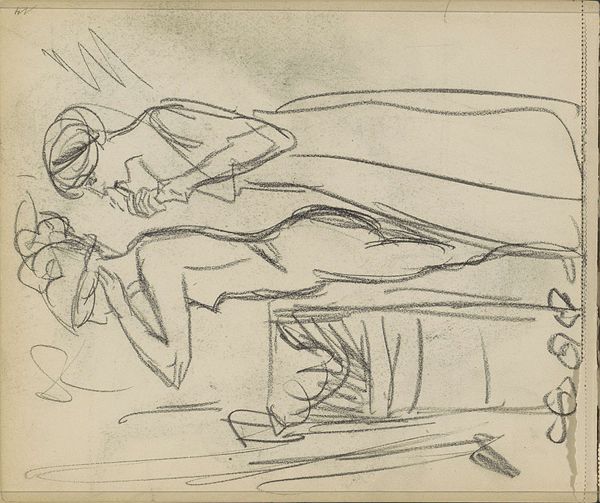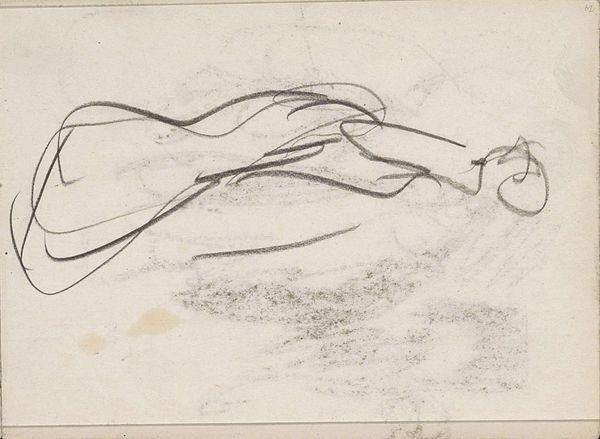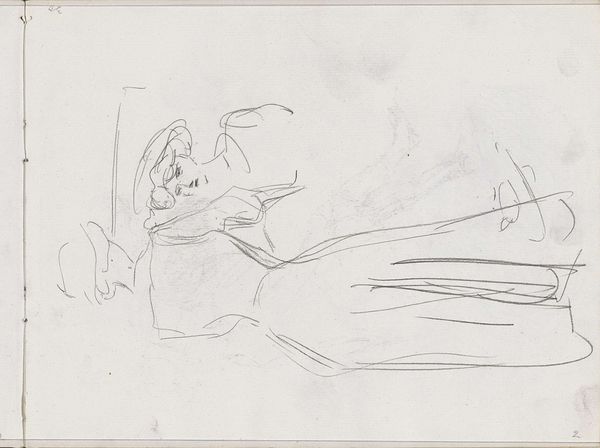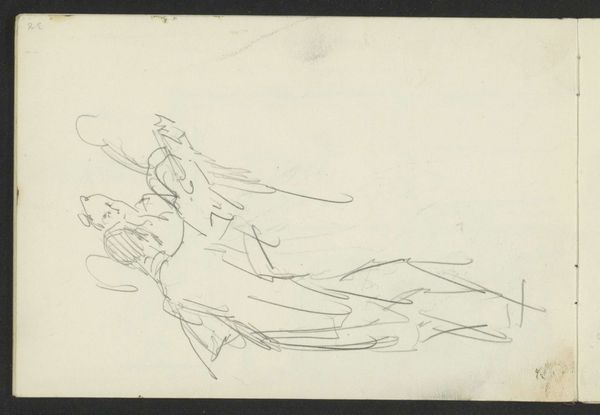
Copyright: Rijks Museum: Open Domain
Editor: This pencil drawing, "Standing Women" by Isaac Israels, believed to be created sometime between 1875 and 1934, feels incredibly gestural and raw. The quick, almost frantic lines give it a sense of immediacy. What stands out to you? Curator: Well, considering this piece, the starkness of the pencil on paper forces us to confront the material conditions of its making. It's not just about representation, but the very labor involved in sketching these figures. Do you notice the repeated, almost industrial, mark-making suggesting a rapid process? Editor: Yes, definitely. It looks like the artist was capturing a fleeting moment, prioritizing speed over detail. Could that have something to do with the social context? Curator: Precisely! Consider the rise of industrialization during that period. Could Israels be reflecting that increasing emphasis on efficiency and mass production in his own artistic process? Is he mirroring society? The choice of pencil, a readily available and relatively inexpensive material, also speaks volumes about accessibility and the changing role of art production. It makes you think about art's value, doesn't it? Editor: It really does! I hadn't thought about the material choice in that light. So, instead of just seeing a sketch of figures, we are also seeing a commentary on the means of artistic production. Curator: Exactly. We begin to question the distinction between the "high art" of painting and the more 'common' act of sketching, a kind of blurring. Editor: This has made me consider sketches in a completely new way, as reflections of their time. Curator: Indeed. Now, how do we move beyond the immediate aesthetic reaction and begin interrogating the socioeconomic forces that shape our engagement with art? It adds layers of meaning.
Comments
No comments
Be the first to comment and join the conversation on the ultimate creative platform.

